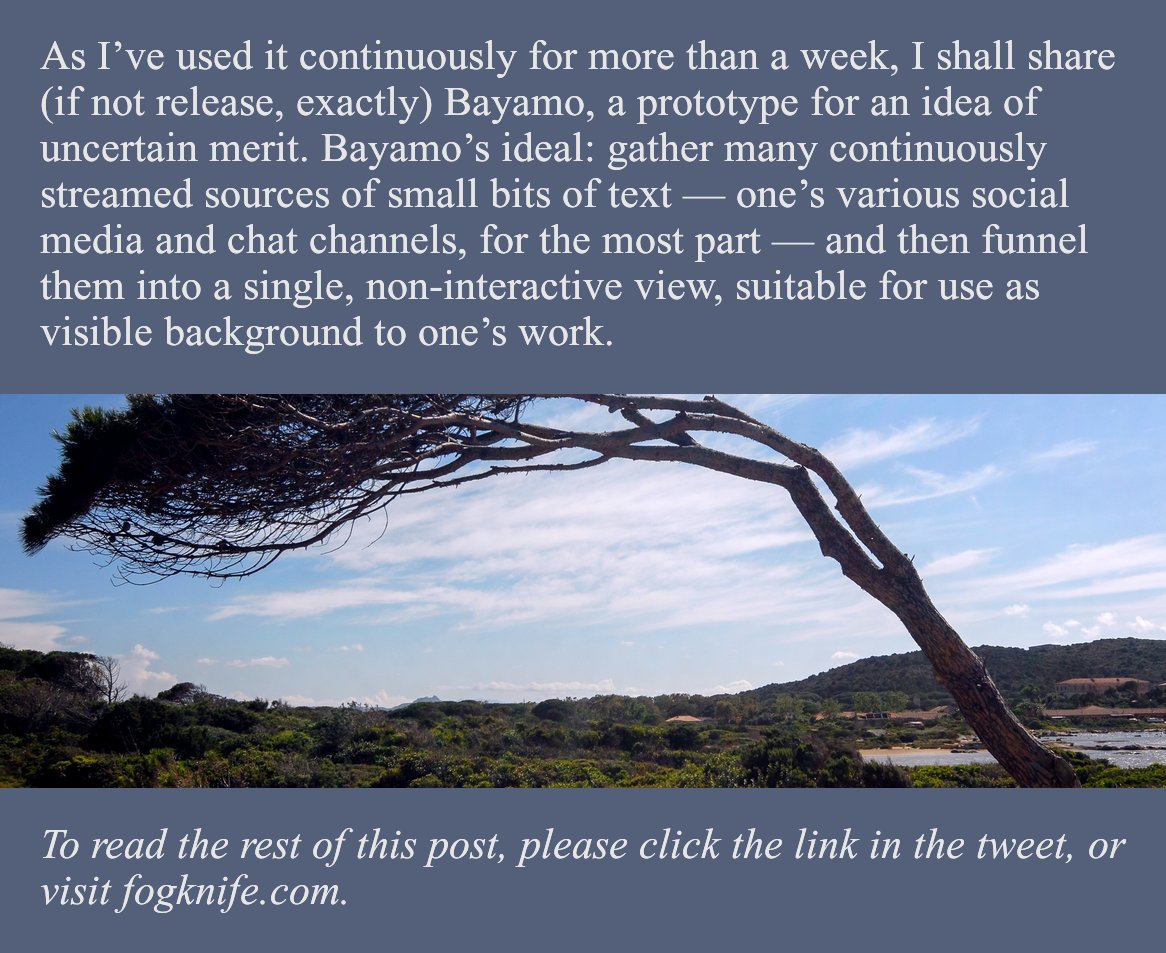You have just read a blog post written by Jason McIntosh.
If you wish, you can visit the rest of the blog, or subscribe to it via RSS. You can also find Jason on Twitter, or send him an email.
Thank you kindly for your time and attention today.
Not content with Alisio’s simple black-text-on-white-field output, I added a new and fancy feature to the script. If the target blog’s most recent post contains an image, then Alisio will add a piece of that image to its output, fashionably cropped and resized so that it fills the whole width of final image without taking over its whole height. It will furthermore change the background of the text to the “average” color of the illustration (more on which below), also changing the text color to a light gray if needed.
I think it looks really cool! Here are a couple of examples, pulled from my own Twitter feed, generated from recent Fogknife posts:


A neat trick I learned while working on this: To determine the “average color” of an image, use the image-processing tool of your choice to resize that image down to a size of 1 by 1, then measure the color of that lone “surviving” pixel. Alisio uses this technique to decide upon a text-background color when given an illustrated post.
I was inspired by a way that iTunes, erm, used to display album information, but apparently doesn’t anymore, now that I’m looking. It would set the background to a color clearly chosen to match the album artwork, and blend it all up nicely and I thought it looked pretty cool. Well, I’m glad that I saw when it did, I suppose.
One more feature I’ve added to Alisio since its initial release: when posting the image to Twitter, it adds alt text describing the image as merely copying the post’s first paragraph, and inviting the reader to visit the blog for the rest. Multiple people have suggested turning the paragraph text itself into the alt text. However, with a 400-character limit, and the fact that Alisio means to direct traffic to the target blog rather than provide an alternate means to read it, I do prefer my more staid usage.
Next post: My summer speaking schedule: !!Con, The Perl Conference
Previous post: Bayamo, a braided chat-stream viewer
To share a response that links to this page from somewhere else on the web, paste its URL here.